Outline
---------------------------------------------------------------------------------------------------------------------------
本文是犹他大学EAE专业的作业(所以是英文的(但是每段都有中文概要))。其实没有很学术。虽然有防剧透,但是还是建议走完全流程再阅读
---------------------------------------------------------------------------------------------------------------------------
- Introduction
- Comprehend the Narrative: Make time and space perpendicular to each other
- The Story of the Present: How self-driven discovery contributes to non-linearity
- The Story in the Past: How archaeology contributes to non-linearity
- Conclusion
Introduction
---------------------------------------------------------------------------------------------------------------------------
本文记录了一种我视觉化理解星际拓荒时空机制的方法,以及为什么这种时空机制给人带来一种独特的,别的开放世界游戏所少有的非线性体验。还介绍了一个特别有趣的点就是关于考古游戏(Archaeogame)中“所谓既定的过去”的浮动性, 或者说认知的非线性性。
---------------------------------------------------------------------------------------------------------------------------
Nowadays, the degree of linearity becomes a dominant standard of games characteristic of openness. It is obvious that current technology is unable to build an entirely non-linear world, especially in terms of storytelling. Due to our own limitations, we can not make time non-linear in any story. However, Outer Wilds develops the possibility of including non-linearity in the narrative, or how to tell the story.
From a rather linear story (without multiple endings or side quests) to an extremely non-linear experience, Outer Wilds embraces a unique mechanic of the time loop. The paper offers a special visualized view to perceive the 4D space-time in Outer Wilds as well as further discussions about how the concept of discovery and archaeology relates to the nonlinearity of the narrative.
Comprehend the narrative:
Make time and space perpendicular to each other
---------------------------------------------------------------------------------------------------------------------------
通常情况下,有剧情的开放世界游戏(open-world)的进度(progression)分别由玩家在时间轴中的位置和可探索空间决定。而(t)与(x, y, z)往往是相互黏连的平行关系,且剧情的线性性(体现为主线任务,过场动画等)常让玩家感受到不自由。星际拓荒中的时间循环(time loop)似乎使得时间轴垂直于可探索的3D空间,成为了4D时空中的第四个普通坐标轴。过去,现在,未来变为(x, y, z, t)中的一个普通参数,而玩家脑海中构建的地图的元素也从【某地点的某物】变为了【某地点于某时发生的某事件】。时间循环带来的可重玩性(replayability)更是切实将时间降维成可感知,可到达,可改变的非线性元素。 此段可视化地介绍了星际拓荒的时空机制。
--------------------------------------------------------------------------------------------------------------------------
There are usually two components of a game that is characteristic of “Openness”: the timeline and the explorable space.

Based on this structure, these games tend to create more non-linearity by expanding the space or making the storyline longer/wider. In the majority of cases, timeline and space are parallel, not interfering with each other.

However, there is another way to create openness based on these two elements: Make them perpendicular to each other. Imagine squashing the 3D space into a 2D plane and placing the fourth axis, time, vertically on the plane. Just like how you are able to move freely in the 3D space right now, you are able to move around the 4D space-time with a location of (x, y, z, t). The linearity of time no longer exists: Anywhere at any time is accessible from your location.

Thus, the two components can be interpreted as a special time slider shown in Fig.4, with the green point representing the location in space-time. In this case, the movement of the single green point now stands for both the progression of the exploring of a 4D map.
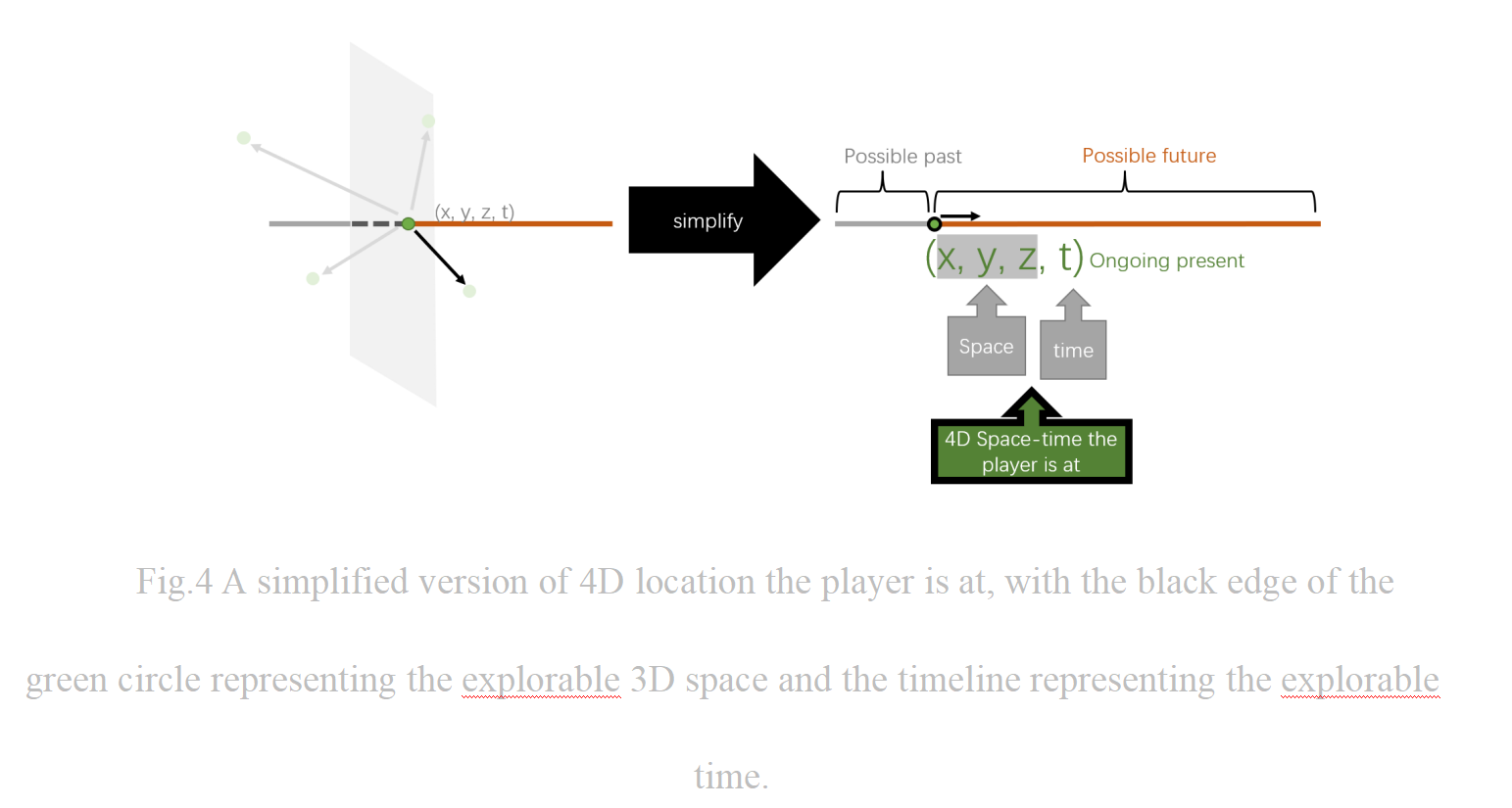
This is exactly the core game mechanic of Outer Wilds. In 22-minute time loops, players can freely explore the entire solar system, figuring out what happens before the loop and how to quit the loop. In these loops, what players do does not change how things work. Everything repeats its pattern and is wiped at the end of the time loop. The only thing that changes is the player’s experience or the memory. The muti-playthrough experience grants “when” players explore with the same importance as “where” (Beachum). As the player’s knowledge accumulates, he/she is able to construct a 4D map in their head.
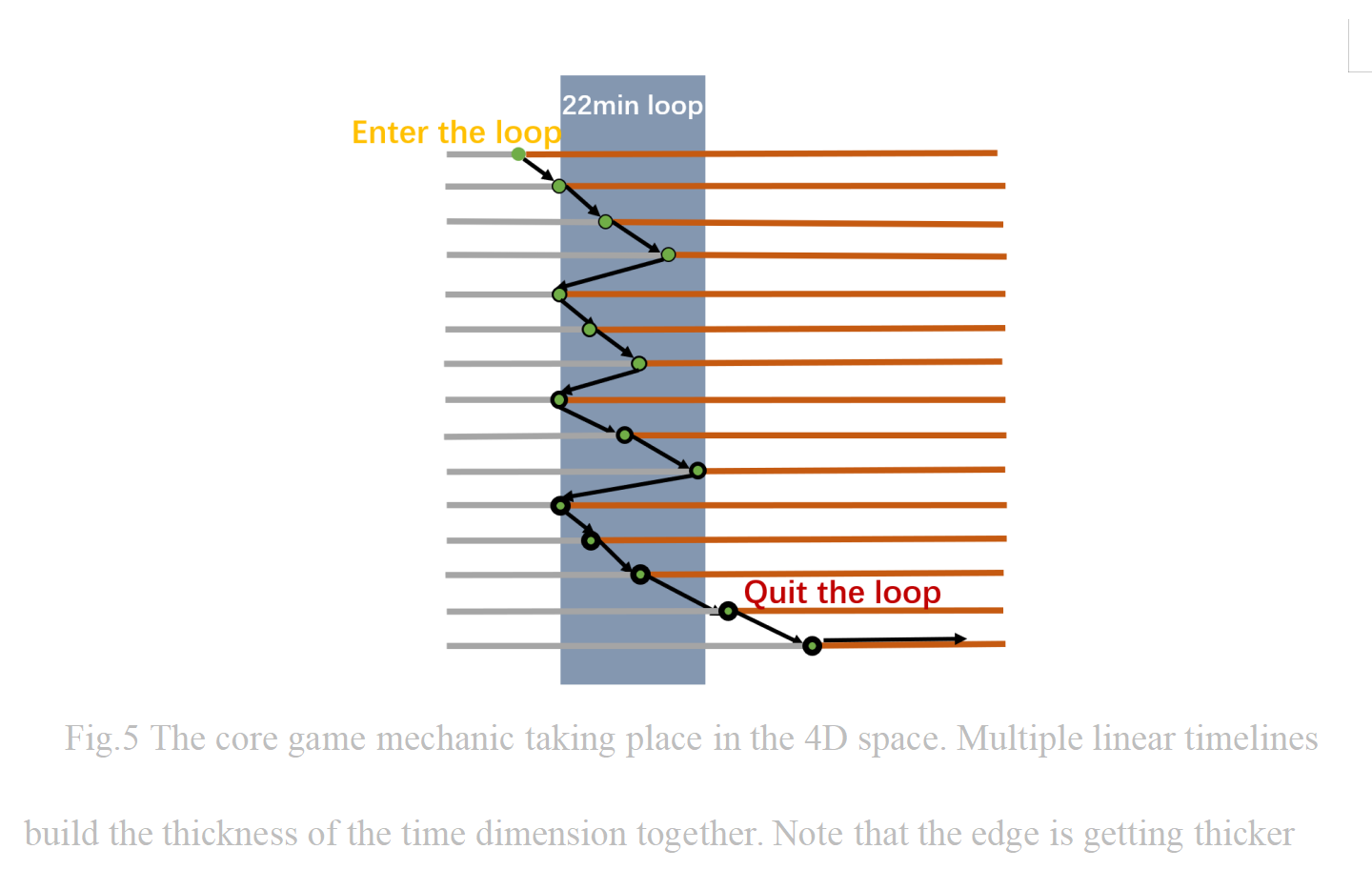
Instead of “going to the future” with a fixed past, the game process is a reconstruction of both the past, the present, and the future. In a quantum physical way, this process can be interpreted as observation (Observer Effect). The more you observe, the narrow the potential area that the story can lie in, and the more the timeline is fixed.
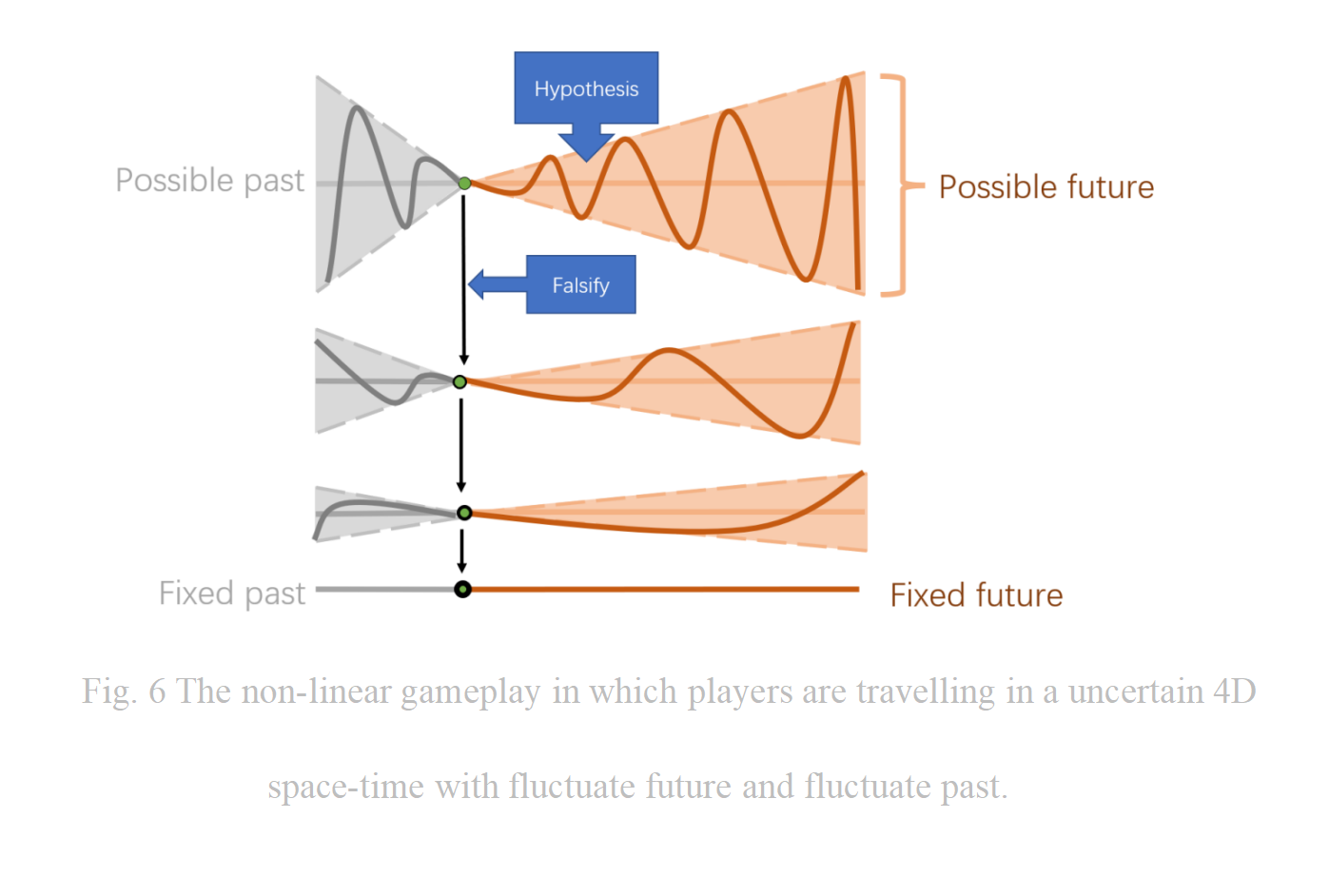
With a limited 22-minute loop and a relatively small solar system to explore, Outer Wilds’ real explorable space is restricted. However, the innovative perpendicular pattern adds an entire dimension to the space, generating much more openness to the gameplay. The future and the past are so clear, and controllable, that you are no longer presented in a 3D space, but rather a 4D space-time.

The story of the present:
How self-driven discovery contributes to non-linearity in the gameplay
--------------------------------------------------------------------------------------------------------------------------
发生于“现在”的故事,即玩家切实参与的游戏循环(game loop),用“发现”的机制带给玩家非线性的体验。整个游戏流程没有任何任务或指引。在开始寻找那把钥匙前,玩家首先需要描绘那把钥匙的形状。
--------------------------------------------------------------------------------------------------------------------------
The nonlinearity of the present, or the gameplay process, lies in the personalized cognition process of a world with fixed patterns. With no specific goal, the player’s behavior is extremely random. The 4D space-time is not only accessible to the player physically, but they are also accessible to the player’s free will. To put it simply, players are not making choices of illusion. Unlike most of the open-world games that tend to bound player’s choices within the main quests, there is no certain goal during the entire gameplay of Outer Wilds. The “dynamic forces” of the game depend on the embedded web of POIs and Curiosities (Beachum 18), which is accomplished by populating the world with things that is not the question itself but arouse the player’s own questions (Beachum 27).
On their first voyage, they may land on any place in the solar system (regarding possibility and regardless of proficiency), which arouses different questions that lead to different self-set goals, building different cognition paths during the entire gameplay.
As Larsen and Schoenau put it, “Instead of the lock-and-key puzzles of adventure games, the player is tasked with learning the shape of the key itself and use detective work to find it.” (Larsen and Schoenau-Fog 1)
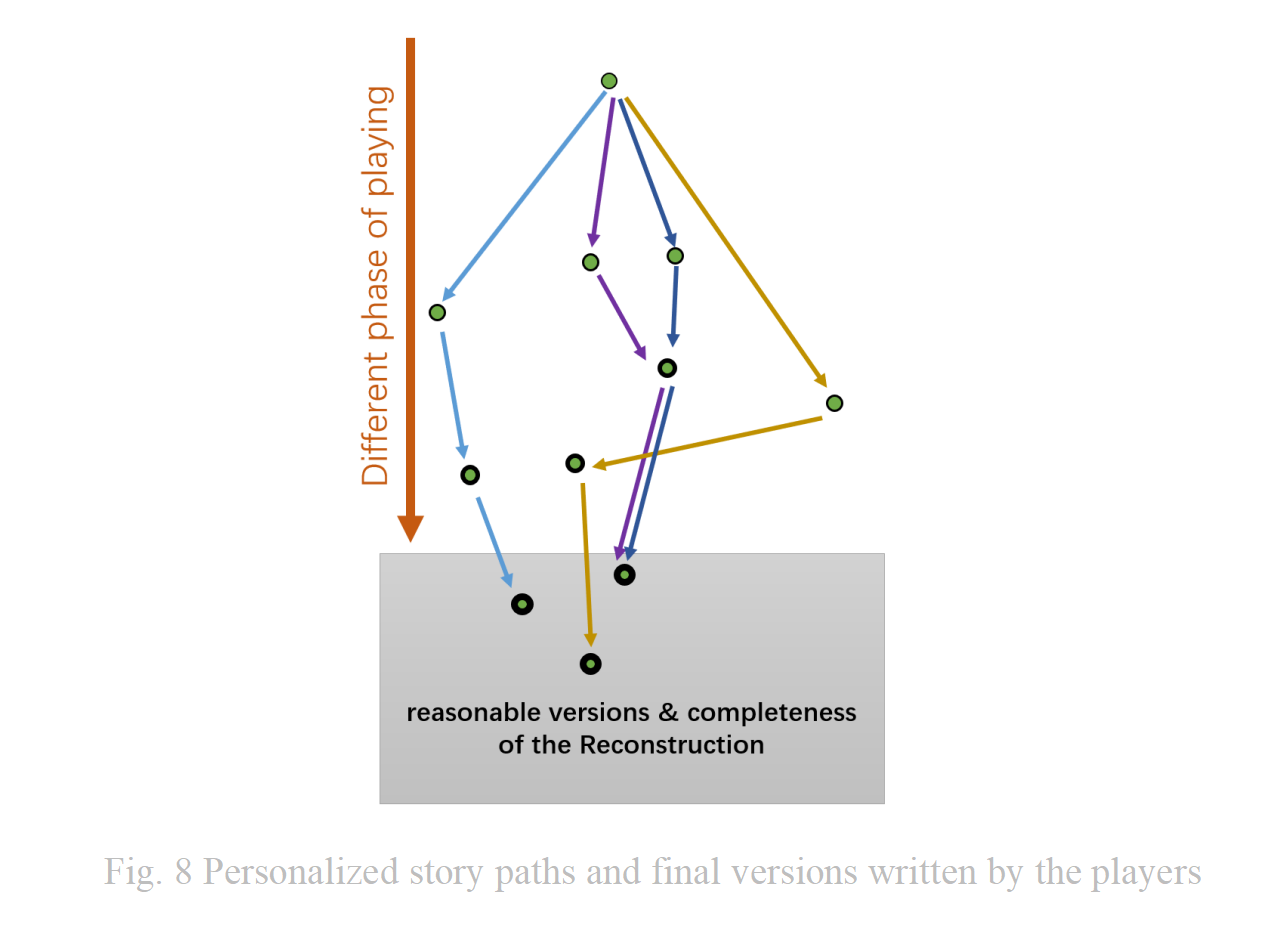
Apart from the free choice on the path’s direction, players are also choosing their personalized endings. It is also worth mentioning that the final version or completeness of the stories also varies on subjective or objective factors.
The story in the past:
How archaeology contributes to non-linearity in the world narrative.
---------------------------------------------------------------------------------------------------------------------------
对于发生于“过去”的故事,即玩家无法切实参与的world narrative,星际拓荒也并没有给我们线性的感觉。与其说是还原既定的过去,不如说是重组意义浮动的“文物”,即考古。我们应注意到新唯物主义(new materialism)在本游戏中的运用:物质的无限性使得人类对于过去的认知永远是浮动的,考古的过程实际上并非发现既定的过去的过程,而是重塑对于过去认知的过程。而这一过程恰恰能够使得玩家对过去产生非线性性理解。
---------------------------------------------------------------------------------------------------------------------------
You can write the story of the present and the future easily through player agency, but it seems impossible to “change” the past. Some claimed that the players are left to explore a fixed world, with no historical significance in their actions (Salajka 4). However, Outer Wilds manages to build a fluctuating past through archaeology, which is not simply the process of discovering the past, but also a non-linear cognition process of the past.
Olsen et al. emphasize that the past is so complex, seeping through each historical stratum and influencing the present in unmeasurable ways, that we should not understand it in a linear, conventionally chronological way. According to the principles of New Materialism, the material world can never be fully depleted solely by human interpretation, which changes over time. This eternal uncertainty and mystery lie in endless new discoveries, resulting in human beings reframing the past endlessly.
In “Materiality, Nonlinearity, and Interpretive Openness in Contemporary Archaeogames”, Marco Caracciolo classifies Outer Wild as an archaeological game, which also embraces non-linearity and indeterminacy (Caracciolo 33) instead of historical accuracy.
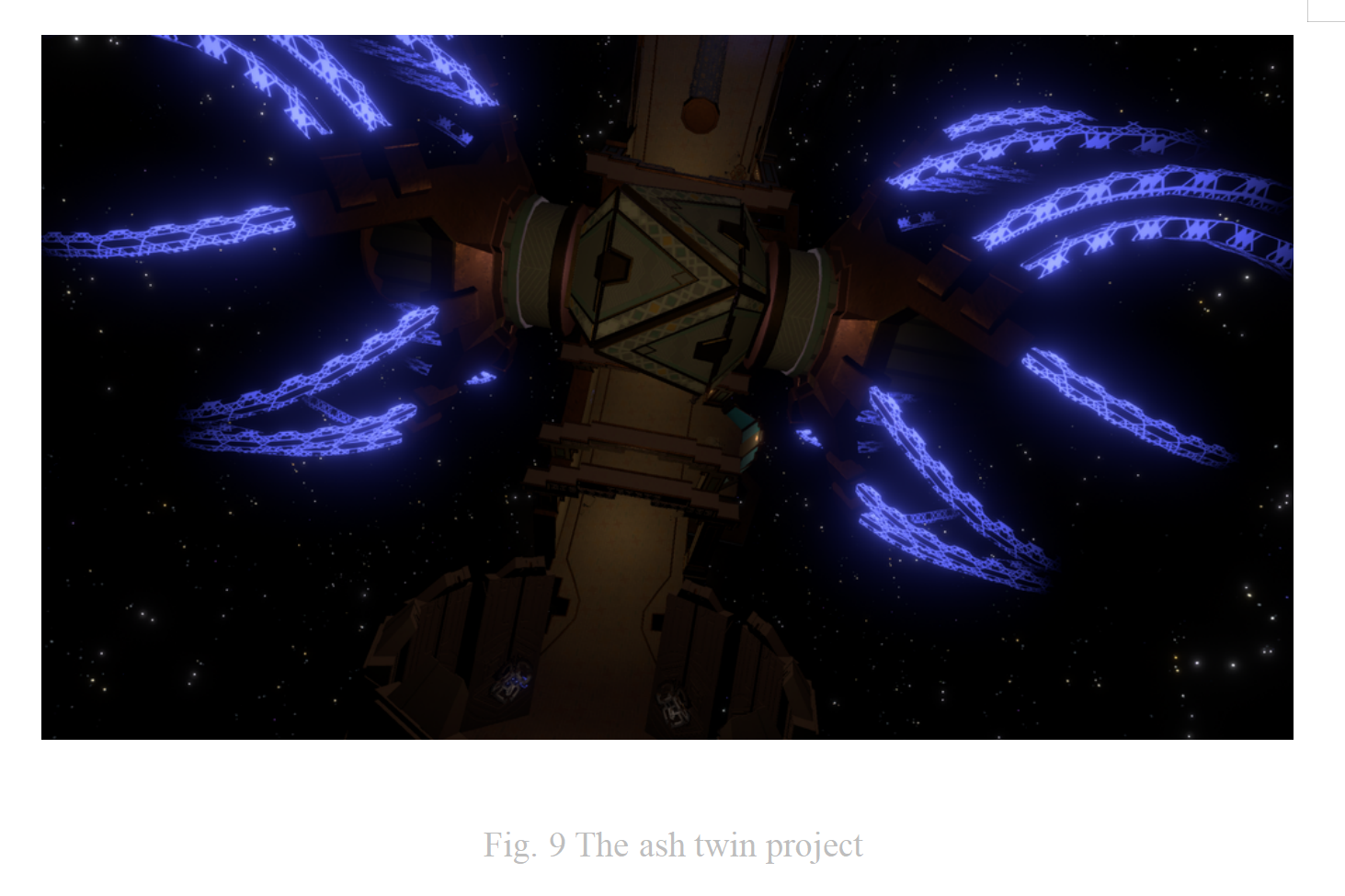
During the gameplay of Outer Wilds, players are continuously reconstructing the past in a roundabout path.
Let’s imagine a player with the hypothesis or the precondition that Nomai built the time loop for some purpose. He/she may first discover that Nomai tried to trigger Supernova by Sun Station, then deduce that the ultimate goal is to destroy the solar system, and the supernova at each 22-minute loop is triggered by Nomai. However, after he/she finds information related to the Ash Twin Project, he/she would figure out that the Sun Station is designed to provide energy for the Ash Twin Project to send data from the Orbital Probe Cannon 22 minutes into the past. After landing on the Interloper, which seems to directly aim at the sun, and finding Nomai’s spaceship there, the player may infer that Nomai decided to trigger the sun by the Ghost Matter at the core, only to find that it is the ghost matter that kills all Nomai inhabited in the solar system. At this stage, the player also realizes that the Sun Station plan did not work out, which means that the Supernova at each loop’s end is not triggered by Nomai and that it is the natural death of the sun. The player may also discover these facts, or make sense of these facts when revisiting, them in a different order, which means they may have a different hypothesis about the process.
As Marco put it, this is how “the plurality of pasts extends into the present and informs the future of human societies” (Caracciolo 43).
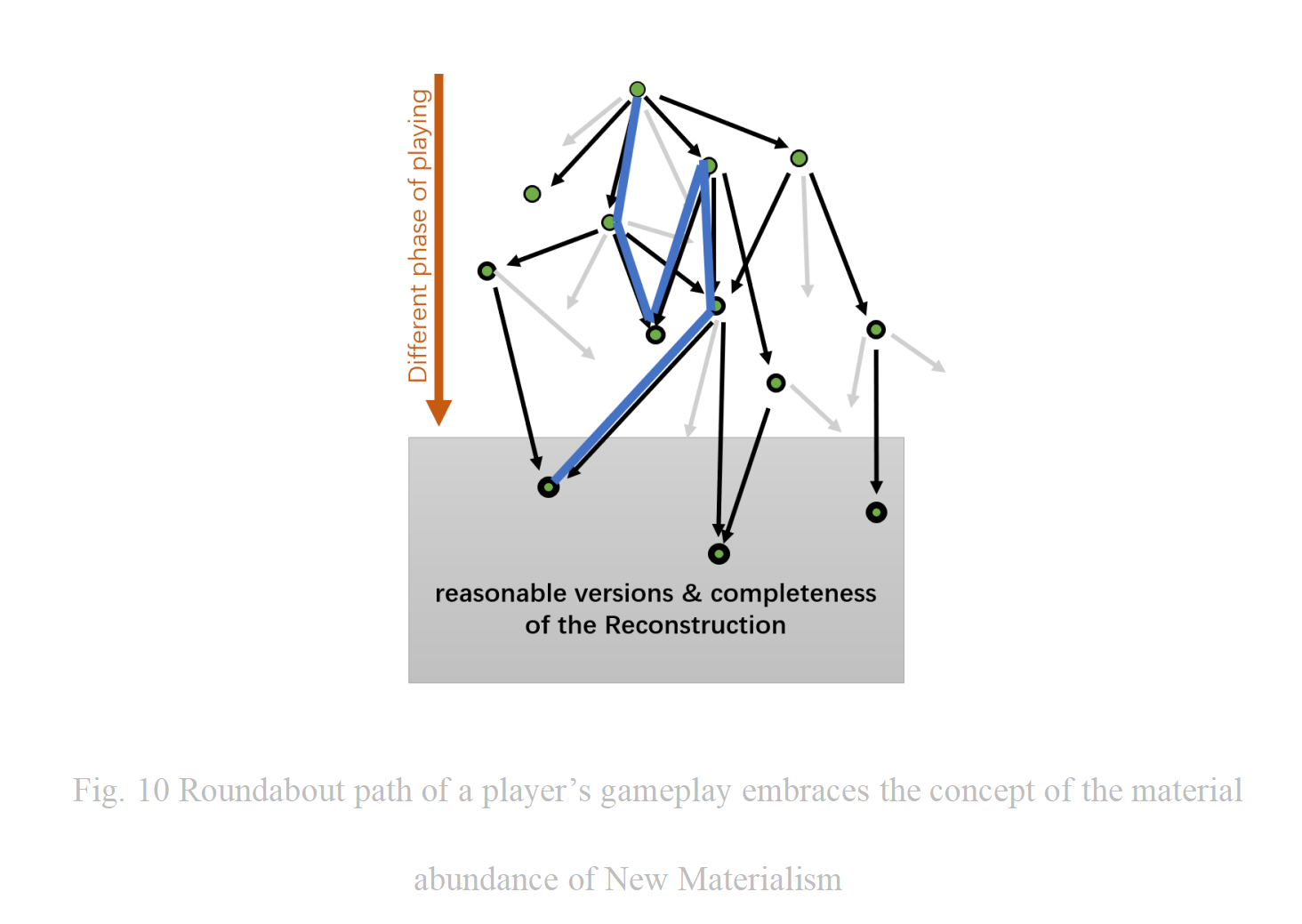
Conclusion
Whether a game is linear or not is often bounded by the linearity of time. Outer Wilds successfully broke the boundary by creating a sense of 4D space-time with the help of "discovery" and "archeology". What the player is constructing is not a 3D map, but a 4D map with time being the fourth coordinate.
I still remember sitting in the spaceship for the last time loop. For the first time as well as the last time, I see the thickness of time. I see the settled past as well as the controllable future, like the linearity of time never existed.
Works Cited
Annapurna Interactive. Outer Wilds. Steam. June 18, 2020. https://store.steampowered.com/app/753640/Outer_Wilds/
Beachum, Alex. Outer Wilds A Game of Curiosity-Driven Space Exploration. Diss. University of Southern California, 2013.
Caracciolo, Marco. "Materiality, Nonlinearity, and Interpretive Openness in Contemporary Archaeogames." Eludamos: Journal for Computer Game Culture 13.1 (2022): 29-47.
Larsen, Bjarke Alexander, and Henrik Schoenau-Fog. "Making the Player the Detective." Proceedings of the 15th International Conference on the Foundations of Digital Games. 2020.
Olsen, Bjørnar. Archaeology: The discipline of things. Univ of California Press, 2012.
Salajka, Sarah. Beyond the Supernova: time, space, and Utopia in Outer Wilds. The University of Alabama in Huntsville, 2022.